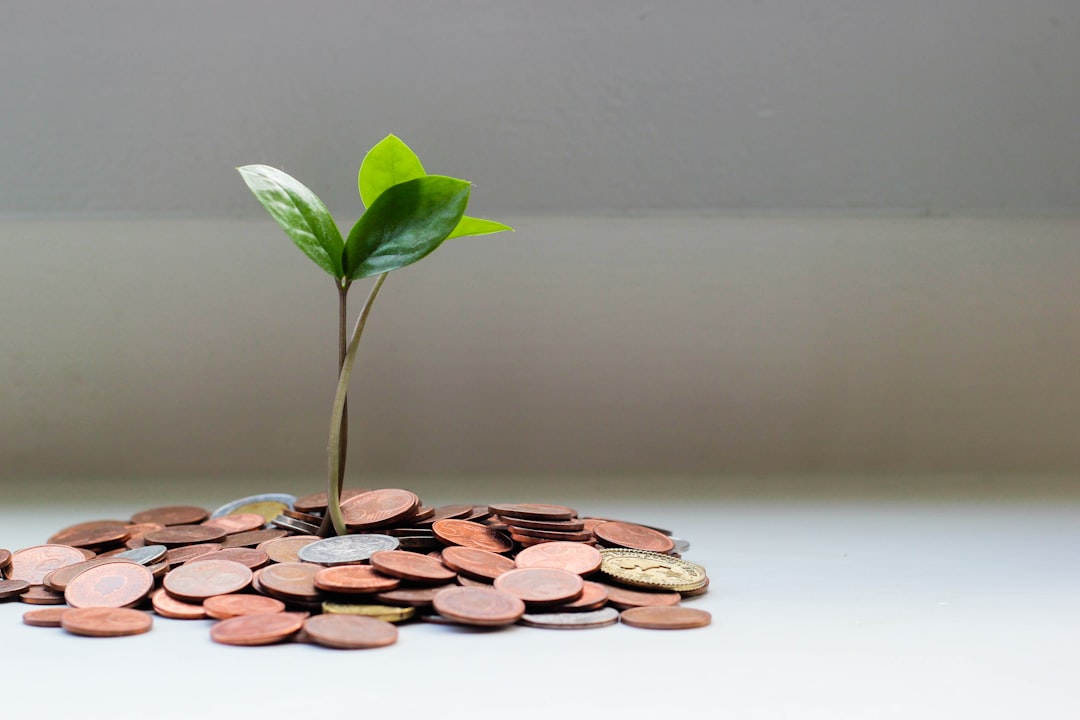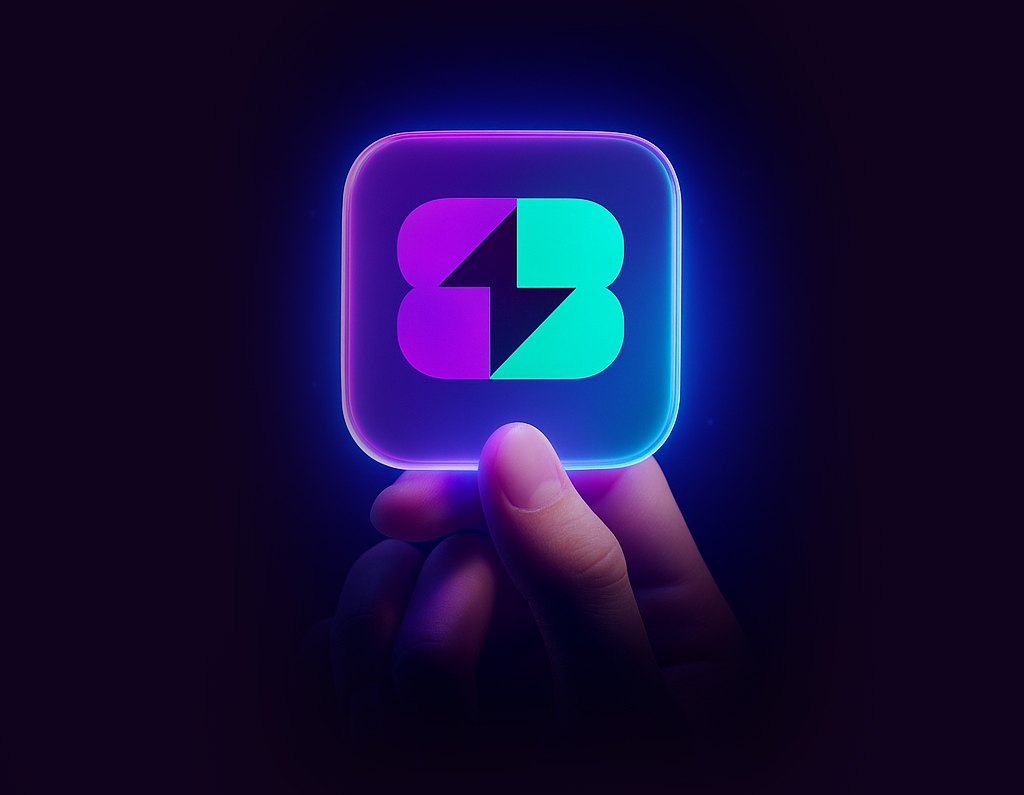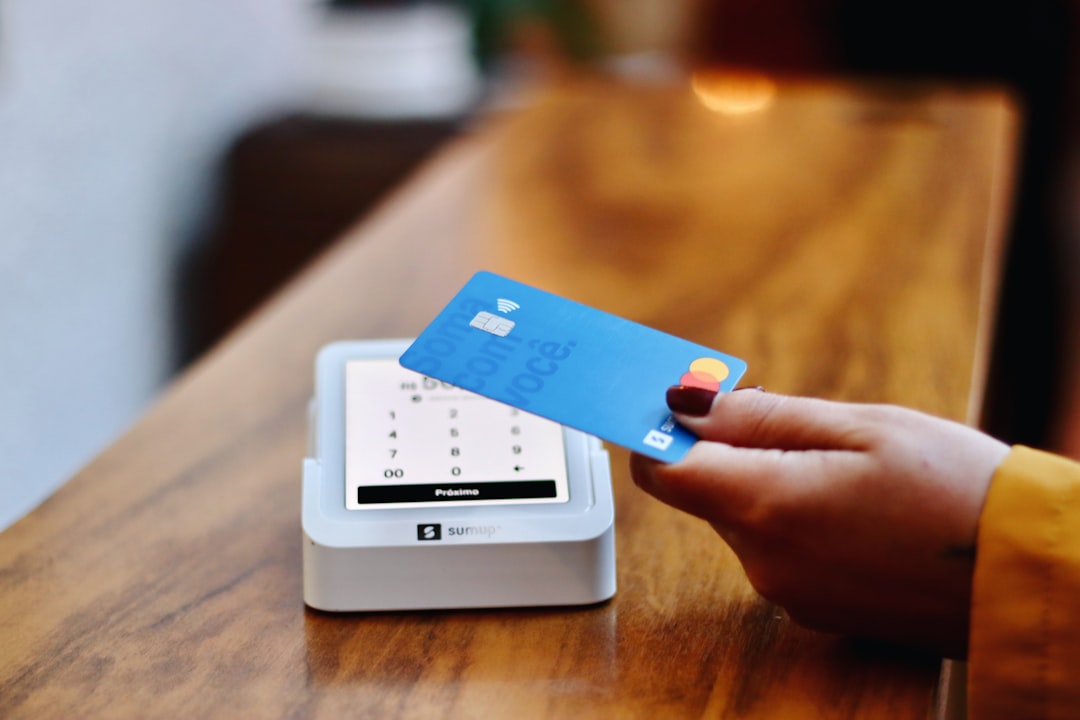
Breaking Up With Broke: A 30-Day Financial Reset Challenge for People Who Are Tired of Being Tired

It's the 15th and you're already broke. Again.
You know the feeling - that sinking pit in your stomach when you check your bank balance and realize you've got two weeks until payday and $47 to your name. You're tired of this cycle. You're tired of feeling anxious every time you swipe your card. You're tired of fighting with your partner about money. You're just... tired.
Here's what this isn't: another lecture about giving up your daily latte. This is a 30-day financial reset challenge designed for real people with real lives who are genuinely exhausted from being broke all the time. No perfection required. No shame allowed. Just small daily actions that actually work.
This challenge has helped thousands of people save an average of $1,200 in their first month. Not through extreme deprivation, but through awareness, small strategic shifts, and building systems that actually support you instead of working against you.
Why You Need a Financial Reset (And Why Now)

Let's be real - if you're reading this, you probably recognize yourself in at least three of these signs:
You're living paycheck to paycheck despite having a decent income. You actively avoid checking your bank balance because ignorance feels safer than the truth. Your credit card debt never seems to go down no matter how many times you promise yourself you'll pay more than the minimum. You have literally no idea where your money actually goes each month. You shop when you're stressed, sad, bored, or basically feeling any emotion at all. Money is the number one thing you fight with your partner about. That little anxiety spike hits every single time you swipe your card, wondering if it'll go through.
Sound familiar? Welcome to the broke cycle: Get paid → Pay bills → Have "fun money" → Overspend because you "deserve it" → Stress about money → More emotional spending to cope → Broke before next paycheck → Repeat forever.
Why This Challenge Actually Works
Here's the thing - most financial advice fails because it tries to change everything at once. "Just budget better!" "Stop spending money!" "Be more disciplined!" Cool, thanks Karen, but that's like telling someone to "just be rich." Not helpful.
This challenge works because it's built on micro-actions that prevent overwhelm. Each day has one small task that takes 10-20 minutes max. You're building daily accountability without feeling watched. There's no shame, no judgment, just measurable progress. We focus on awareness before restriction - you can't fix what you don't understand. Most importantly, we're building lasting habits, not looking for quick fixes that disappear by February.
How This Challenge Works (Your Roadmap to Financial Freedom)
The Framework
30 days, 30 micro-actions that build on each other. Each day's task takes 10-20 minutes max - less time than you spend scrolling TikTok. You can track everything in the BuyBye app or go old-school with pen and paper. We've got weekly check-ins to celebrate wins and adjust what's not working. And if you want it, there's a whole community doing this with you.
What You'll Need
The BuyBye app (or honestly, a notebook works too). 15 minutes of daily commitment - that's it. Honesty with yourself (the real kind, not the "I'm fine" kind). Willingness to feel a little uncomfortable - growth lives there. Your bank statements (yes, all of them - no hiding). Optional but helpful: an accountability partner who'll cheer you on and call you out when needed.
The challenge is structured in four strategic phases:
Week 1: Awareness Without Judgment (Days 1-7) - You're not changing anything yet. Just observing. Understanding your patterns. Identifying what triggers you to spend. No guilt, no shame, just data collection.
Week 2: Small Strategic Shifts (Days 8-14) - Now we implement tiny changes, one at a time. Build friction into impulse purchases. Start automating good decisions so you don't have to rely on willpower.
Week 3: Momentum & Optimization (Days 15-21) - Time to cancel what doesn't serve you. Negotiate bills like the savvy person you're becoming. Create sustainable systems that run on autopilot.
Week 4: Lock It In & Level Up (Days 22-30) - Cement these new habits so they stick. Plan for long-term success beyond this challenge. Celebrate how far you've come.
Week 1: Awareness Without Judgment (Days 1-7)

Philosophy check: You can't fix what you don't measure. Week 1 is about gathering intel, not making changes. No shame allowed here. Understanding WHY you spend is way more important than WHAT you spend on.
Day 1: The Money Snapshot
Your first task is simple but brave: Check all your account balances. Yes, all of them. That checking account, the savings you haven't looked at in six months, those credit cards you've been ignoring. Calculate your true current net worth - what you own minus what you owe.
Write down the number. Don't judge it. Just acknowledge it. Notice any feelings that come up - fear, shame, relief, surprise? All valid. Now celebrate showing up. Seriously. Looking at your financial reality when you've been avoiding it takes courage.
Day 2: Track Every Single Dollar
Download your last 30 days of bank and credit card transactions. Don't categorize anything yet - just review. Notice what surprises you. Count how many transactions you literally don't remember making. (If you're like most people, it's going to be alarming.)
Set up expense tracking in BuyBye or your method of choice. Starting today, you're tracking everything. Everything. That $2.50 vending machine Coke? Track it. The $47 impulse Target run? Track it. No judgment, just awareness.
Day 3: Find Your Financial Triggers
Time to journal about your recent purchases. For each one, ask yourself: What emotion preceded this purchase? When are you most likely to impulse buy - morning, night, weekend, weekday? Which environments trigger spending - Target, Amazon, the mall, specific social media apps?
Note physical feelings too. Does your chest get tight before emotional purchases? Do you feel a rush of excitement? Boredom in your body? Understanding your triggers is like finding the enemy's battle plan.
Day 4: The Subscription Audit
List every single subscription you're paying for. Streaming services, apps, gym memberships, subscription boxes, Amazon Prime, Spotify, iCloud storage, that meditation app you used once - everything.
Don't cancel anything yet (that comes later). Right now, just awareness. Calculate your monthly total. Then your annual total. Highlight the ones you genuinely forgot you were paying for. Spoiler alert: the average person has at least 3-5 forgotten subscriptions.
Day 5: The Want vs. Need Reality Check
Review every purchase from the last 7 days. Label each one honestly: Need, Want, or WTF Was I Thinking? Calculate the percentage in each category.
Most people discover that about 60-70% of purchases are wants, not needs. That's not bad - it's just data. No judgment, remember? Just notice the patterns.
Day 6: Your Money Story
Today's task is reflective. Think back to childhood. What did your family teach you about money? Was it tight and stressful or abundant? Was money discussed openly or hidden? What limiting beliefs do you carry - "money is evil," "I'm bad with money," "rich people are greedy"?
What money "rules" are you following unconsciously that maybe don't serve you anymore? Write a paragraph about your relationship with money. Be honest. This is just for you.
Day 7: Week 1 Check-In & Celebration
You made it through the hardest week - the awareness week. Review everything you learned. What surprised you most? What patterns emerged? What did you learn about your triggers?
Most importantly: Celebrate. You showed up every day. You faced financial truths you'd been avoiding. You didn't run away. That's huge. Set one intention for Week 2 and give yourself credit.
Week 2: Small Strategic Shifts (Days 8-14)

Now the fun begins. You understand your patterns. Time to build some strategic friction into bad habits and make good decisions automatic. Remember: small changes create big results. Progress over perfection, always.
Day 8: Delete Saved Payment Info
This might feel annoying - that's literally the point. Remove saved credit cards from Amazon, Target, food delivery apps, every online store. Disable one-click purchasing everywhere. Log out of retail websites.
Research shows that each extra step in the purchasing process reduces impulse buying by about 20%. Having to get up, find your wallet, and manually enter your card number? That's three steps and three opportunities to ask yourself if you actually want this.
Day 9: The 24-Hour Rule Implementation
Set up your 24-hour hold system today. Enable BuyBye's purchase pause feature if you're using the app. Create a "Want List" in your notes app. Make this commitment to yourself: Nothing over $50 gets bought same-day, no exceptions.
When you want something, screenshot it or write it down. Revisit it tomorrow. You'll be shocked how many times "must have right now" becomes "meh, don't need it" after 24 hours.
Day 10: Automate One Good Decision
Set up one automatic savings transfer. Even if it's just $10 a week - start somewhere. Choose an amount that feels manageable, not aspirational. Schedule it for the day after payday so the money moves before you can spend it.
Name the savings account something meaningful - "Emergency Peace of Mind," "Future Me Fund," "Freedom Account." Making it personal makes it matter more.
Day 11: Unsubscribe & Unfollow
Time to Marie Kondo your digital temptation. Unsubscribe from 10 retail email lists - you know the ones that make you "need" things you didn't know existed 30 seconds ago. Unfollow 5 accounts on social media that trigger your spending - yes, even if you love their content.
Turn off shopping app notifications. All of them. If Amazon can't send you notifications about sales, Amazon can't convince you that you urgently need a banana slicer at 11pm.
Day 12: Create a "Fun Money" Buffer
Here's where we prevent the deprivation mindset that tanks most budget attempts. Decide on a weekly guilt-free spending amount - $20, $50, whatever works for your situation. Transfer it to a separate account or cash envelope.
This money is YOURS. No tracking required. No justification needed. Spend it on whatever brings you joy. When it's gone, it's gone until next week, but while you have it, enjoy it without guilt.
Day 13: The Replacement Strategy
For each of your spending triggers from Day 3, identify a free or cheap alternative. Stressed? Ten-minute walk instead of Target run. Bored? Call a friend instead of browsing Amazon. Tired? Nap instead of emotional online shopping spree.
Write your personal replacement list and put it somewhere visible - phone lock screen, sticky note on your credit card, whatever works. When the urge hits, consult the list.
Day 14: Week 2 Check-In & Momentum Check
Review all the changes you've implemented. What's working? What feels challenging? Calculate any money saved so far - even $20 matters. Adjust systems that aren't clicking.
Celebrate: You're building entirely new patterns. Your brain is literally forming new neural pathways. Share one win with your community or accountability partner.
Common Week 2 Challenges
Forgetting the 24-hour rule in the moment. Feeling deprived even with fun money. Partner not on board with changes. Emergency expenses derailing progress. Old habits sneaking back when you're tired or stressed.
How to Handle Them
Set phone reminders everywhere - calendar alerts, alarms, whatever helps. Actually use your fun money guilt-free (that's what it's for!). Share your why with your partner but invite, don't pressure. Separate true emergencies from "emergencies" (broken car = emergency, new shoes = not emergency). Be kind to yourself and restart immediately without shame.
Week 3: Momentum & Optimization (Days 15-21)

You've built awareness and small habits. Now it's time to optimize your fixed expenses and reclaim money from recurring waste. Channel your inner negotiator - companies are counting on you to just accept whatever they charge. Stop accepting.
Day 15: The Midpoint Celebration
You're halfway through! Calculate your total savings so far. Compare this month's spending to last month. Acknowledge specific behavior changes - deleting apps, using the 24-hour rule, checking your balance regularly.
Identify your biggest win - what are you most proud of? Share your transformation with your accountability partner. Then treat yourself within your fun money budget!
Day 16: Cancel One Unused Subscription
Remember that audit from Day 4? Time to actually cancel one subscription you're not using. Start with the easiest one - the gym you haven't visited since 2023, the streaming service you forgot existed.
Calculate the annual savings from this one action. A $15 per month subscription you're not using is $180 per year you just reclaimed. Notice any feelings that come up - guilt? Relief? Pride? All valid. Add that saved amount to your savings goal.
Day 17: Negotiate a Recurring Bill
Today you're calling to negotiate one bill - internet, phone, car insurance, whatever. Here's your script: "Hi, I'm reviewing my expenses and looking to lower my monthly costs. What can you do to reduce my rate?"
Be willing to mention switching providers. Even if you save $10 per month, that's $120 per year. Do this for one service today. You'll be amazed how often "sorry, that's the rate" becomes "actually, let me see what I can do" when you push back.
Day 18: The Meal Planning Money Saver
Plan five dinners for next week. Make a grocery list based strictly on that plan. Calculate projected savings compared to your usual takeout habit.
Prep one thing in advance - chop vegetables, cook rice, marinate protein. This isn't about becoming a meal prep influencer. This is strategic laziness - make future you's life easier so future you doesn't order $45 of Thai food at 8pm.
Day 19: Optimize Your Banking
Research high-yield savings accounts - you should be earning at least 4% interest right now. Move your emergency fund (or starter emergency fund) to an account actually earning you money. Compare checking account fees - are you paying for a checking account? Stop.
Set up fee alerts for everything. Your money should work for you, not against you.
Day 20: The Debt Clarity Day
List all debts - credit cards, student loans, car loans, everything. For each one, write down the current balance, interest rate, and minimum payment. Choose your strategy: avalanche method (highest interest first) or snowball method (smallest balance first).
Calculate one extra payment you can make toward your chosen target debt. Even $25 matters. Set up an automatic extra payment starting today. Automating it means it happens without willpower.
Day 21: Week 3 Check-In & System Audit
Review all optimizations you made this week. Calculate total monthly savings you created through canceling, negotiating, and optimizing. Update your budget with these new lower amounts.
Redirect those savings to your goals - emergency fund, debt payoff, whatever matters most. Celebrate: You're over halfway and the momentum is real. Recommit to the final push.
Week 4: Lock It In & Level Up (Days 22-30)

Your new habits are forming but they're still fragile. Week 4 is about cementing what works, building long-term sustainability, and planning for continued success beyond this challenge.
Day 22: The Emergency Fund Focus
Assess your emergency fund status honestly. The goal: $500-$1,000 starter fund, then eventually 3-6 months of expenses. Calculate how much you actually need for peace of mind.
Set a monthly contribution goal based on what you've learned about your spending. Automate contributions starting today. Your emergency fund is the buffer that breaks the broke cycle permanently.
Day 23: Create Your Financial Vision Board
Time to visualize what you're building toward. What does financial freedom actually look like for you? A vacation without credit card stress? Buying groceries without anxiety? Debt-free date? Specific savings amount?
Create a digital or physical vision board with specific goals. Put it somewhere you'll see daily - phone background, bathroom mirror, fridge. When the 24-hour rule feels hard, look at this.
Day 24: The "No" Practice Day
Today's task: Say no to one spending temptation. Use your new tools - the 24-hour rule, trigger replacements, whatever helps. Notice the feeling of choosing yourself and your goals over instant gratification.
Journal about the experience. This might feel uncomfortable. That discomfort is where growth happens. Celebrate this act of self-respect.
Day 25: Build Your Support System
Share your journey with someone you trust. Find an accountability partner or join the BuyBye community. Be vulnerable about your struggles - perfection isn't the goal, progress is.
Ask for specific support you need. Schedule regular money check-ins - weekly, biweekly, whatever works. You don't have to do this alone.
Day 26: The Quarterly Review System
Calendar your future money dates now, while you're motivated. First Saturday of every month: full budget review (30 minutes max). Quarterly "optimization days" to cancel, negotiate, adjust. Annual financial goal-setting session.
Committing to ongoing maintenance is how the change lasts. Your financial health is like your physical health - it needs regular check-ups.
Day 27: Create Your Spending Values Statement
Define what you actually want money to do for you. Write 3-5 values that will guide your spending decisions moving forward. Examples: "Security over status," "Experiences over things," "Freedom over possessions," "Future me over instant gratification."
Post this somewhere visible. Use it to filter purchases - "Does this align with my values?" If no, it's an easy no.
Day 28: The Setback Recovery Plan
Create your plan for when (not if) you slip. Because you will. You're human. Write yourself a compassionate response you can read when you mess up. Define your "restart" protocol - what's the first thing you do after an impulse purchase or blown budget?
Remove shame from the equation completely. Progress isn't linear. You've got tools now. One setback doesn't erase 28 days of transformation.
Day 29: Final Audit & Celebration Prep
Compare your Day 1 numbers to your Day 29 numbers. Calculate total money saved over the challenge. List all new habits you've established - logging expenses, using the 24-hour rule, checking your balance regularly, whatever stuck.
Document behavior changes beyond the numbers. Do you feel less anxious about money? More in control? Proud of yourself? Prepare to celebrate tomorrow!
Day 30: The Graduation & What's Next
Reflect on the full transformation. What are you most proud of? Which habit made the biggest impact? What surprised you about yourself? What did you learn about your relationship with money?
Set 90-day financial goals - where do you want to be three months from now? Then CELEBRATE BIG. Within budget, obviously, but seriously celebrate. You just completely transformed your financial life in 30 days.
Day 1: Before
Living paycheck to paycheck with no buffer. Actively avoided checking account balances. Emotional spending on complete autopilot. No systems, no awareness, no control. Financially stressed and overwhelmed constantly. Felt completely powerless around money.
Day 30: After
Building a buffer between paychecks. Know exactly where you stand financially. Spending consciously, aligned with actual values. Automated systems supporting your goals. Empowered and genuinely in control. Money working for YOUR goals, not against them.
Keeping the Momentum: Life After the Challenge

The challenge is over, but the transformation continues. Here's how to maintain what you've built and keep leveling up.
The Habits That Stick (And Why)
Research shows it takes 66 days on average to form a habit, not 21. You're at 30. The habits most likely to stick: automatic savings (because it requires no willpower), the 24-hour rule (because you've seen it work), and regular balance checks (because knowledge is power).
Keep doing your monthly money dates. They're 30 minutes that save you hours of stress. Keep that quarterly optimization day on the calendar - subscriptions creep back, rates increase, you need to stay vigilant.
How to Handle Setbacks Without Spiraling
You will have a bad spending day. Maybe even a bad spending week. Here's what you do: Acknowledge it without drama. Review what triggered it - stress, celebration, exhaustion? Use your setback recovery plan from Day 28. Restart immediately, no waiting for Monday or next month.
One impulse purchase doesn't erase 30 days of changed habits. Progress isn't linear. The broke cycle is broken when you get back on track quickly instead of spiraling into "well, I already messed up so might as well keep going."
Leveling Up: From Breaking Even to Building Wealth
Once you're consistently breaking even or seeing that buffer grow, it's time to level up. Increase your automatic savings by $10-20. Add an extra debt payment. Start investing even if it's just $25 per month in a target-date retirement fund.
Small consistent actions compound into life-changing results. You've proven you can change your habits. Now let time and consistency do the heavy lifting.
Red Flags You Need a Mini-Reset
Watch for these signs that you need to revisit this challenge: Checking your balance less frequently, impulse purchases increasing, avoiding money conversations with your partner, stress shopping returning, subscriptions creeping back, financial goals feeling distant instead of approaching.
When you notice these, don't panic. Just do a week-long mini version of this challenge. Awareness, adjustments, recommitment. You've got the tools.
Real Transformation Stories
Sarah, 28, Teacher
"I started this challenge with $8,000 in credit card debt and literally $0 in savings. After 30 days, I'd saved $460 and paid an extra $200 toward my debt. But honestly? The number that mattered most was finally understanding WHERE my money was going. Day 3 - finding my triggers - changed everything. Turns out I was spending $200 per month on 'self-care' purchases when I was stressed about work. Now I go for a walk instead. Revolutionary."
Marcus, 34, Software Developer
"I make good money. Like, really good money. But I was living paycheck to paycheck because I was impulse-spending $1,200 a month without even realizing it. This challenge wasn't about me needing to 'budget better' - I needed to understand my why. Day 11, when I deleted all my shopping apps? That was the game-changer. I haven't looked back. Cut my impulse spending by 70% and started a $10K emergency fund. Finally have that 'F-you money' feeling."
Jennifer & Tom, Couple, 31 & 33
"We were fighting about money every single week. Tom would hide purchases, I'd get resentful about his spending, neither of us actually knew our full financial picture. This challenge forced us to do it together. The vulnerability of Day 1 - actually showing each other our accounts - was terrifying and liberating. Day 27, when we created our values statement together, felt like couples therapy but better. We saved $780 together in 30 days, but more importantly, we're finally on the same team."
You're Not Broke Anymore - You're Building
Here's the truth: Breaking up with broke isn't about deprivation. It's not about denying yourself everything you enjoy. It's not about living on rice and beans until you're 65.
It's about making intentional choices that actually align with your real values instead of reacting to every emotion and advertisement. It's about small daily actions that compound into life-changing transformation. It's about building systems that support you instead of working against you.
You just proved you can do this. You showed up for 30 days. You faced uncomfortable truths. You made changes that felt weird at first. You built new habits. You broke the broke cycle.
The tools are yours now. The awareness is yours. The habits are yours. Your relationship with money has fundamentally shifted. This isn't the end - it's the beginning of a completely different financial life.
The Invitation
Join the thousands who've completed this 30-Day Financial Reset Challenge. Start today - Day 1 is always available, no waiting for the "right time." You don't have to do this alone. BuyBye will guide you every single day, track your progress, and celebrate every single win with you.
Your financial freedom journey starts right now. Not Monday. Not next month. Not when you "get your act together." Right now, exactly as you are.
Ready to break up with broke for good? Download BuyBye and start your 30-Day Financial Reset Challenge today. Daily prompts. Progress tracking. Community support. Everything you need to transform your relationship with money.
The broke cycle ends here. Your building phase begins now. Let's go.


